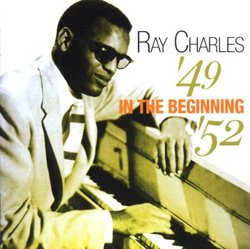Awesome but not for newbies
The Rocketman | Los Angeles, CA | 02/06/2005
(4 out of 5 stars)
"The tracks on these CDs are identical to those on the 2-CD set "Birth of a Legend" (ASIN: B00000E9LL). Since the other set is a bit more expensive, it appears this set doesn't include the thick booklet of liner notes. My guess is that if you can find the other set (Amazon has it listed, but currently out of stock), you should probably go for it.
I'm not sure of the sonic quality of the recordings here, but, assuming that it is the same as the original issue, you should expect the fidelity of the late 40's. In other words, production values aren't what they are now. (In contrast, even the earliest Atlantic recordings sound great because they were remastered.)
In addition, the sound Ray Charles was to develop at Atlantic ("soul") is really not in evidence here. If not for Ray Charles' later fame, it's doubtful these recordings would be released on CD. How lucky for us R&B aficionados that they are. The recordings are very much of the period they were made and owe a great deal to the sounds of Charles Brown among others. This makes for great mood music for late-night seduction.
This is an excellent set of CDs but if you are just coming to Ray after seeing the movie with Jamie Foxx, you can skip this for a while. Indulge yourself with the Atlantic recordings and the Country and Western recordings box sets, as well as some of the Rhino reissues, first. Then you will have a better appreciation for the music here."
Don't start at "The Beginning"...
Forrest D. Bryant | California | 07/25/2005
(4 out of 5 stars)
"If you're looking for classic Ray Charles -- the incarnation of Ray Charles that recorded "What'd I Say" and "(Nighttime Is) The Right Time" and all those other soul classics of the 50s, and 60s, this is NOT the set for you. Go straight to Ray's Atlantic Records material instead.
These are Ray's earliest recordings, and at this time he sounded nothing like the Ray Charles of later years. On these sides, Ray makes a very obvious attempt to sound like the other L.A.-based cocktail lounge R&B performers of the era, especially Nat King Cole or Charles Brown, with smoothed out, low-toned vocals, and his piano at the head of a drummerless trio. The music is very fine indeed, and a lot of fun, but firmly in the vein of those other performers.
On the second disc, Ray begins to open up a bit, expanding his trio to an orchestra (with some great sidemen including Jack McVea and a young Stanley Turrentine) and getting into some rockin' jump-blues sounds. These tracks with horns are the closest to the sound most people associate with Ray Charles, although he still had a long way to go.
In sum, if you enjoy late 1940's r&b, you will enjoy this set. It's not essential by any means, and the sound is rather muddy, but the musicianship was solid, the songs include a lot of great ballads, blues, and humor, and it's interesting to follow Ray's progress in becoming his own man, musically speaking."

